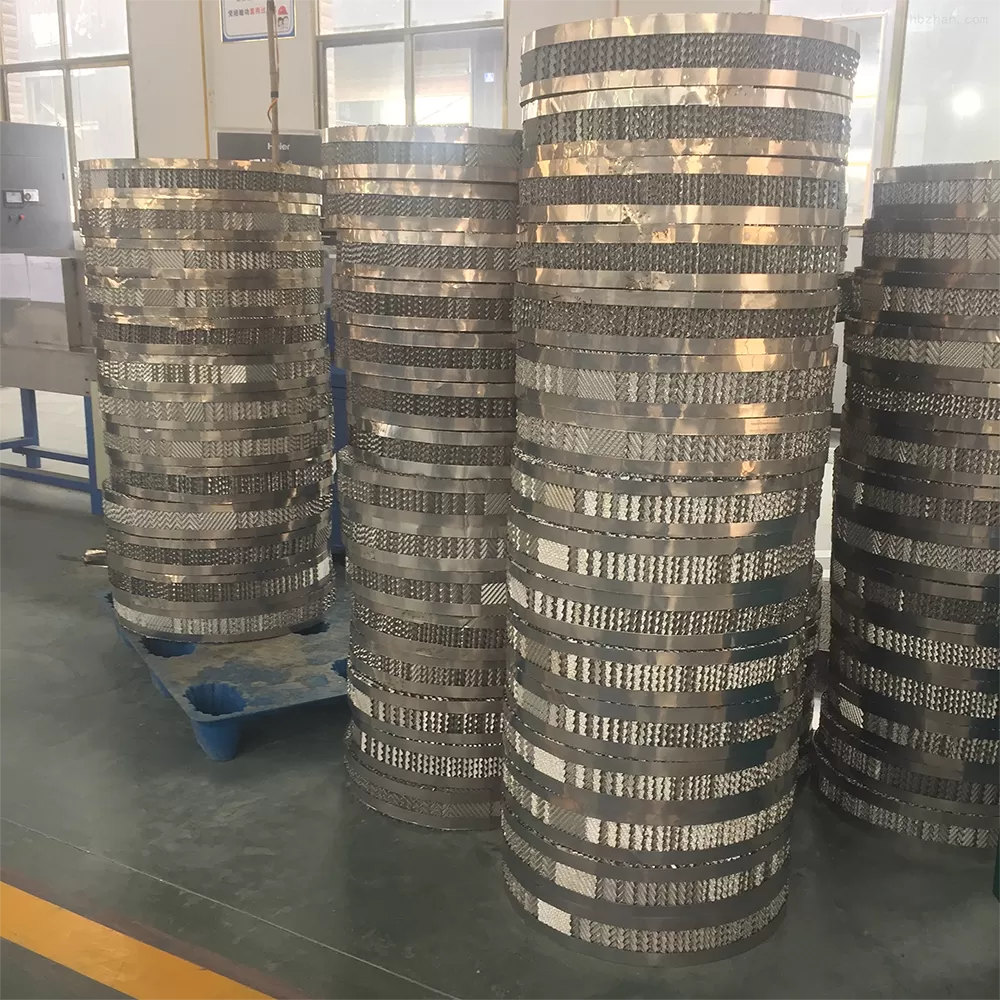How to Apply Quota for Corrugated Structured Packing?
Applying quota for corrugated structured packing in engineering projects involves aligning its characteristics with relevant quota standards, considering material type, specifications, installation methods, and project requirements. Proper quota application ensures accurate cost estimation and compliance with industry norms. Here are key steps and considerations:

Identify Quota Classification Criteria
Corrugated structured packing is typically categorized in engineering quotas based on material, such as metal, ceramic, or plastic. Each material type may have separate quota items due to differences in cost, processing, and installation complexity. For example, metal corrugated packing (e.g., stainless steel, Hastelloy) often falls under "metal structured packing" quotas, while ceramic variants are classified under "ceramic packing" or "refractory packing" sections. Plastic corrugated packing may be grouped with other plastic-based separation components.
Match Specifications to Quota Details
Quota items are further defined by specifications like specific surface area (e.g., 250 m²/m³, 500 m²/m³), corrugation size, and module dimensions. It is crucial to match the actual packing specifications to the closest quota item. If the exact specification is not listed, select the most similar item and adjust the quota content or unit price based on material thickness, corrugation density, or manufacturing precision, as these factors directly affect material and labor costs.
Consider Installation and Auxiliary Work
Quota application should include not only the packing itself but also associated installation work. This includes labor for unpacking, cleaning, and positioning the packing modules, as well as installing auxiliary components like support grids, hold-down plates, or wall flow rings. Some quotas may integrate these auxiliary works into the main packing item, while others require separate calculation—verify the quota description to avoid omissions.
Account for Material and Market Price Adjustments
Basic quotas often use standard material prices, which may differ from actual market prices. For high-value materials (e.g., alloy metal corrugated packing or high-purity ceramic packing), adjust the material cost in the quota by substituting the standard price with the current market price of the specific material used. This ensures the quota reflects real-world costs accurately.
Refer to Industry and Regional Standards
Quotas vary by region and industry (e.g., petrochemical, pharmaceutical, environmental engineering). Use the quota system applicable to the project’s location and sector—for example, petrochemical projects may follow specialized quotas for distillation tower internals, while environmental projects might reference general chemical engineering quotas. Consult local engineering cost management regulations or industry-specific guidelines to ensure compliance.
Handle Customized or Specialized Packing
For customized corrugated structured packing with unique designs (e.g., special corrugation angles, perforated structures, or anti-fouling coatings) that lack direct quota matches, adopt a "similar item + adjustment" method. Use the closest standard quota as a base and add supplementary costs for customization, such as additional material processing or special installation requirements, documented with technical specifications and supplier quotes.
In summary, applying quota for corrugated structured packing requires careful classification by material and specification, inclusion of installation and auxiliary works, market price adjustments, and adherence to regional or industry standards. Proper quota application ensures accurate cost control and supports efficient project budgeting.

